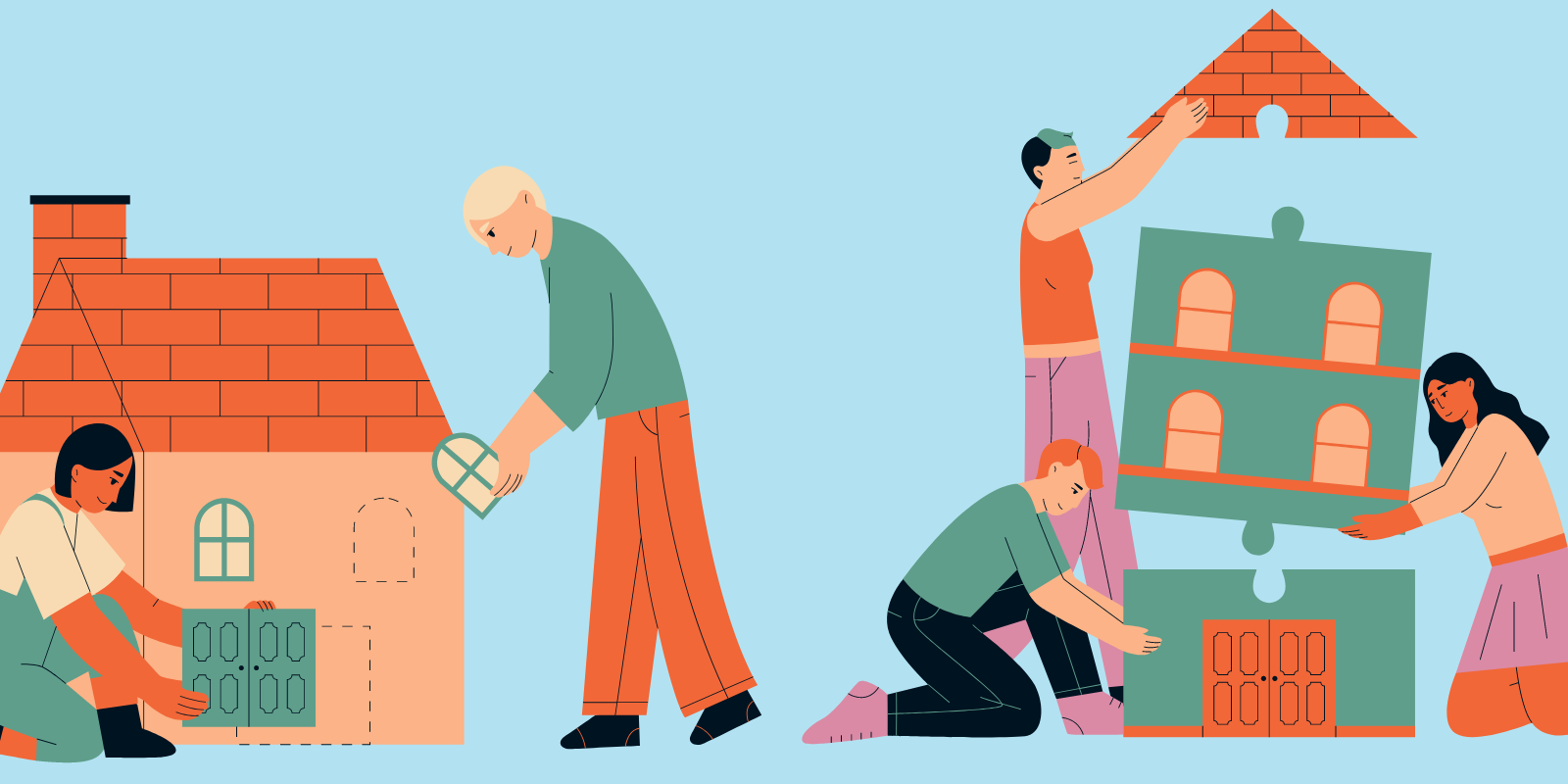In the Spring of 2021, Mainstay Housing and Houselink Community Homes merged to form Houselink & Mainstay. Together this new organization is the largest supportive housing and non-profit housing provider in Canada. They have a portfolio of about 60 buildings across the City of Toronto, and manage another 300 units through partnerships with private landlords. They also provide support services, beyond housing, to more than 900 individuals.
“This merger really made sense for a number of reasons,” explains Gautam Mukherjee, Houselink & Mainstay Executive Director, “for one, it meant that we could leverage a larger balance sheet to fund new developments.” The organization’s strategic plan has a strong focus on accessibility and scale with the development of purpose built, mixed-income housing.
“About half our portfolio are rooming houses, with people sharing bathrooms and kitchens, and we know that for some populations of people receiving our support services, it’s just not the right housing setting,” says Gautam. Part of the organization’s strategy is to raise capital through the sale of these rooming houses, in order to fund new builds that better fit their clients needs.
“We are actively in the land market, and had an offer signed back recently – I think this could be a great demonstration project for community investment,” says Gautam. He explains that underwriting has become very challenging in recent months, with interest rates and building costs up. “What originally looked like $6.5 million needed in owner equity could now be upwards of $20 million and we will have a gap to fill,” he explains.
The organization recently incorporated a non-profit subsidiary to take on the development on behalf of Houselink & Mainstay. This subsidiary has a clear mandate for the development of mixed income housing. The parent organization will then deploy rent supplements to ensure that a percentage of the units are supportive, and provide support services to tenants.
The conversation shifts away from Houselink & Mainstay for a moment as Gautam gives the Tapestry team a quick 101 on the affordable housing policy framework in Ontario. He explains that the model has shifted over the years away from supportive housing grant funding to the provision of rent supplements. In the case of the Ontario Ministry of Health, they are providing rent subsidies directly to community agencies, who then decide how to use them. “In some cases an agency will lease one unit, or a few units, and in others they might lease an entire building.”
“Essentially, we are a conduit for providing equity, in the form of rent subsidies,” explains Gautam, “and most of these subsidies end up in the hands of private landlords – so we are really just transferring equity to them.”
When Houselink & Mainstay sell their rooming houses their operating funding will convert to rent supplements, which they will be allowed to transfer to other properties. “These rent subsidies cover 100% of average market rent (AMR) and we intend to redeploy them into our own newly built units.”
Gautam is of the opinion that things can only get better from here. “We haven’t seen indications of increasing grant amounts to offset rate increases, or make stress tests easier. And there is no provincial participation, so that can only improve.” Gautam believes we may also see the City of Toronto wave development charges for non-profit projects where a certain proportion of units are affordable.
“I think the land economics are the same for everybody – private or non-profit,” says Gautam, “and if we want to compete, we need to get into the land market and be willing to take some risks.” He’s of the view that if these projects, in the worst case, can work as market developments, then non-profits should be initiating projects. “We need to give the government projects to invest into because they’re not coming to the table proactively.”
Gautam sees the benefits of allowing community members to invest in these projects too. “Getting community buy-in for what we are doing is very appealing, and there’s obviously the need to bring in new capital.” Gautam also shares that their Board has been considering different ways to grow the community profile of the organization.
“When we do talk publicly about what we are doing, we are getting traction. But historically, we haven’t used that momentum for fundraising, and we don’t have a way to do what you are doing,” says Gautam with a smile, “of course, that’s why you are doing it!”
“I’ve long been supportive of community funding for housing development – I think it’s brilliant!” Gautam wraps up, “we just need to know what to do and where to go.”
About this Blog Series
In October 2021, Tapestry was selected to take part in a Canadian Mortgage and Housing Corporation (CMHC) program called the Housing Supply Challenge. This innovative competition encourages residents, interested parties, and experts from across the country to propose creative solutions to housing. The goal: to help meet Canada’s pressing need for safe and affordable homes by breaking down barriers to the creation of new supply.
Tapestry participated in Round 2 of the program, Getting Started, which seeks to find solutions to pre-development challenges, such as community resistance and obtaining financing. The program granted incubation funding to the 29 organizations selected to allow them to further develop and test their solution proposals.
Through six months of research and consultation, we had the opportunity to speak with over 40 interested parties in the affordable housing sector, from housing providers, to development consultants, to funders and lenders. Each and every individual and organization consulted helped to co-design our solution proposal.
The “Financing Affordable Housing with the Power of Community” blog series shares the lessons learnt and stories heard from some of the amazing organizations that we have partnered with.




